Our research and development DY Lab is constantly exploring emerging technologies and their applicability to Airport Planning. Our professional staff consolidates this knowledge through the development of proprietary aviation software.
Innovative Airport Planning Using Data Mining Techniques
DY Consultants is a pioneer in data-driven approaches to airport planning. We consolidate, process and harness information from a variety of databases to provide maximum intelligence to airport operators and tenants. DY planners mine data to understand current airport operations using data visualization tools and techniques, assess the impacts of proposed procedure modifications through modeling and statistical analyses, and undertake post-implementation performance analyses to compare projected values with actual documented results. Using data mining and analytics, it is possible to evaluate project performance, uncover existing inefficiencies and characterize aircraft operating patterns.
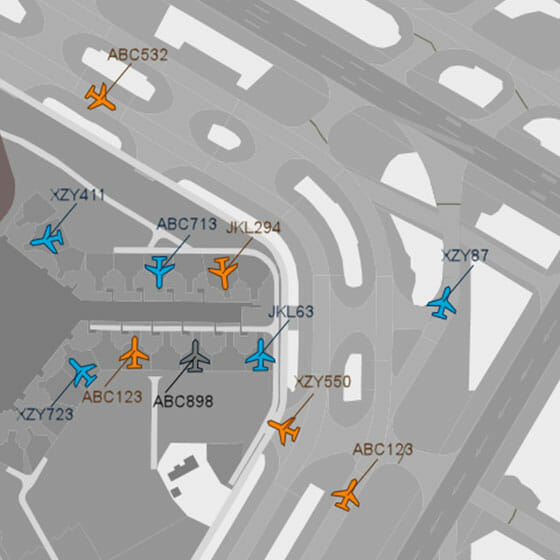
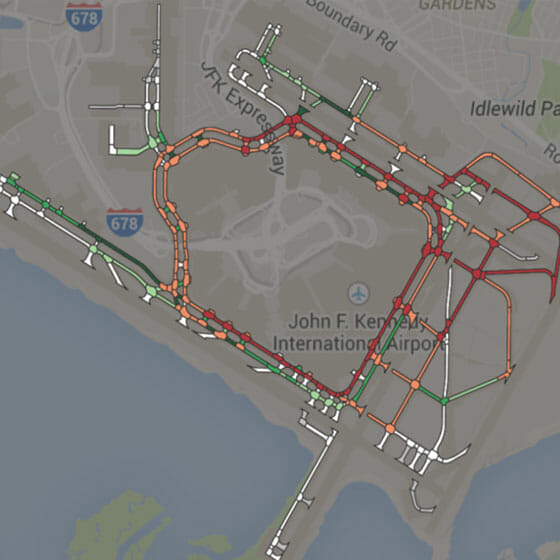
John F. Kennedy International Airport
DY Lab applications were used at John F. Kennedy International Airport in an extensive series of analyses aimed at reducing congestion, optimizing runway exit selection and enhancing runway crossing performance. The DY Lab also obtained performance metrics regarding aircraft taxiing for route, average speed and bottleneck locations. Additional performance metrics included the characterization of departure traffic according to queue length, sequencing and staging. The DY Lab analyzed departure performance using expected vs. actual departure separation times to calculate delays.
Aviation Software Development
DY Lab has developed several specialized software tools to aid in airport planning, including:
Aircraft Gating Mode
This tool is used to gate a flight schedule. It models the various gates and their associated restrictions and dependencies at an airport. The software runs an algorithm that generates an optimized and gated flight schedule. The end result is an efficient and informative visualization featuring an interactive Gantt chart and a customized display of information.
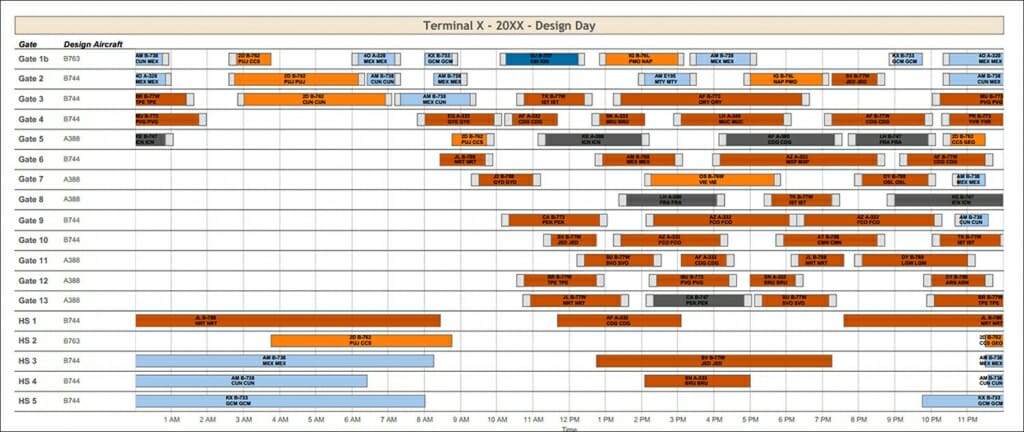
Airspace Obstruction Model
This modeling tool performs obstruction analyses for airports based on Federal Aviation Administration (FAA) regulations and airport design standards. The software inputs the results of an obstruction survey of an airport and its surroundings. It identifies existing and future penetrations to defined surfaces. These can include Part 77 primary and approach surfaces, Threshold Siting Surfaces and so on. The output can then be used by DY airport planners to prepare obstruction drawings in CAD and propose mitigation options to address the penetrations. It is also possible to use Google Earth to display results of surfaces and obstructions in 3D.
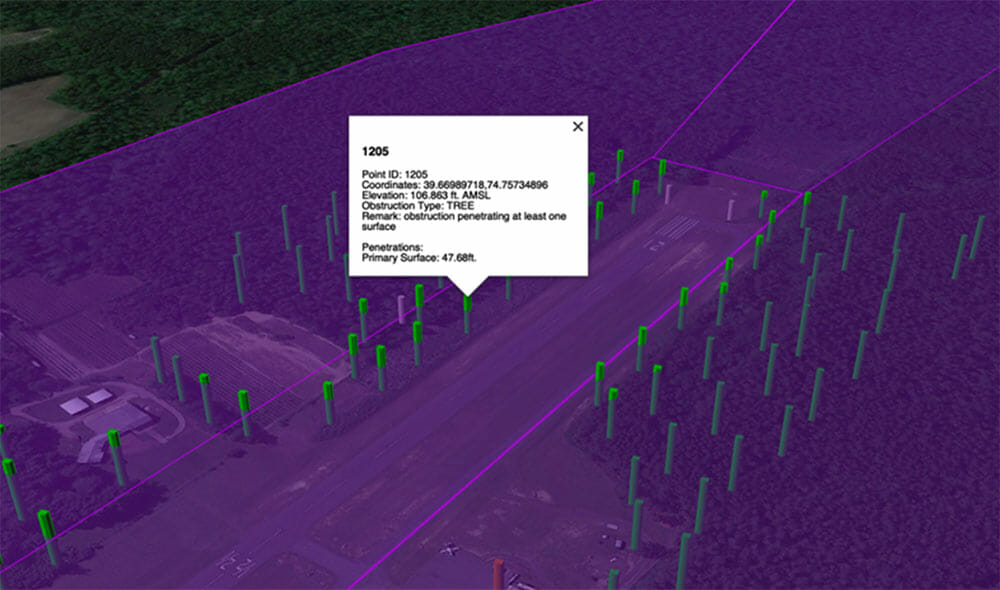
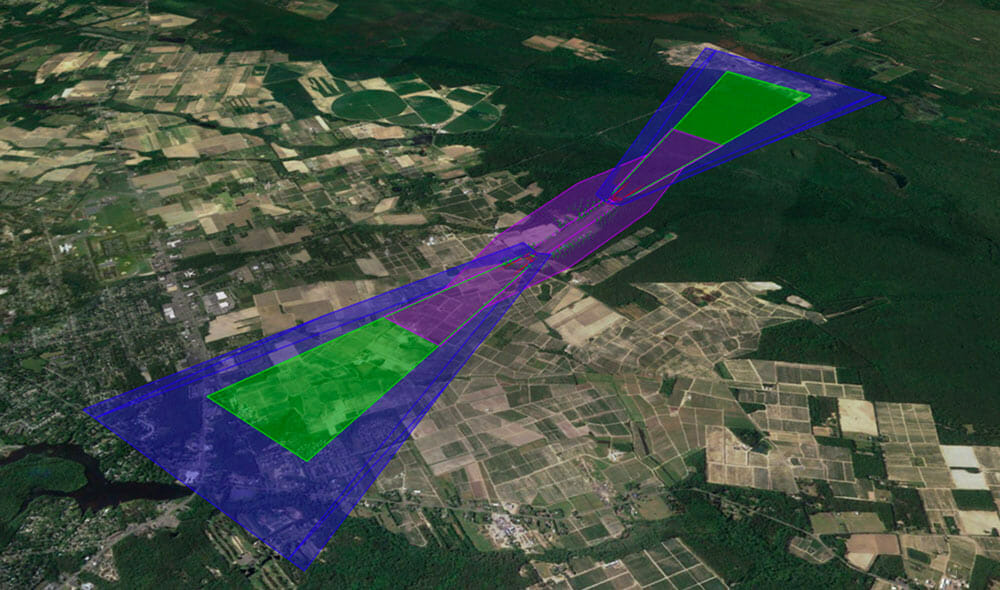
Addressing COVID-19 Via Technological Innovation

The Covid-19 pandemic is an unprecedented global crisis that is forcing the aviation industry to innovate to ensure its continued viability. Every single aspect of the industry is being disassembled to its most elemental parts and re-examined—from access modes to bathroom access, from transiting through security to transiting through a retail zone, from checking body temperatures to checking baggage. The very survival of the entire industry depends on how well this transformation evolves.
At the onset of Covid-19, DY Lab launched an aggressive internal research program to stay abreast of the challenges presented by the crisis. This ongoing effort entailed the gathering and assessment of product literature, articles, publications, regulators’ guidance plans, airport and air carrier operation measures, and information regarding technological and operational innovations in response to Covid-19. Through this endeavor, DY Lab has acquired a substantial amount of knowledge on “healthy” airport practices and has advised several of our clients accordingly. Additionally, DY Lab is presently developing a planning solution to provide airports with an efficient, quickly deployable and data-driven operational plan for enhancing resilience during a public health emergency.
ACRP Research
To solve common problems, learn about new technologies and assess innovations in service and operations, airport sponsors need unbiased and reliable research. In 2005, the Airport Cooperative Research Program (ACRP) was established by the Federal Aviation Administration (FAA) to meet this need.

ACRP receives annual funding allotments from the FAA to fulfill its mission. With these allocations, ACRP funds research projects and activities to help airports address real-world challenges and problems.
DY Consultants plays a key role in research projects sponsored by ACRP. In their Research Project 04-19, Airport Emergency Planning: Incident Command System Compliance, DY led nationwide surveys and conducted a series of interviews with airport sponsors from all nine FAA regions. These sponsors represented the gamut of airport size and function—from General Aviation (GA) airports to medium- and large- commercial hubs.
Based on the survey findings and interviews, DY prepared a comprehensive summary of findings as well as recommendations for the development of a tool/template intended to help airport managers and operators in preparing Airport Emergency Plans (AEPs) and improving emergency preparedness and operations.
DY also led ACRP Synthesis 11-03, Topic S03-15, “How Airports Plan for Changing Aircraft Capacity – the Effects of Upgauging.” The research team worked closely with the ACRP Topic Panel and a broad range of stakeholders around the country. Large, medium and small hub airports, GA airports, State DOTs and Aeronautics offices were represented. The goal of the project was to investigate and summarize current industry practices related to air service development, traffic forecasts, flexible planning and funding opportunities for airport capacity developments.
